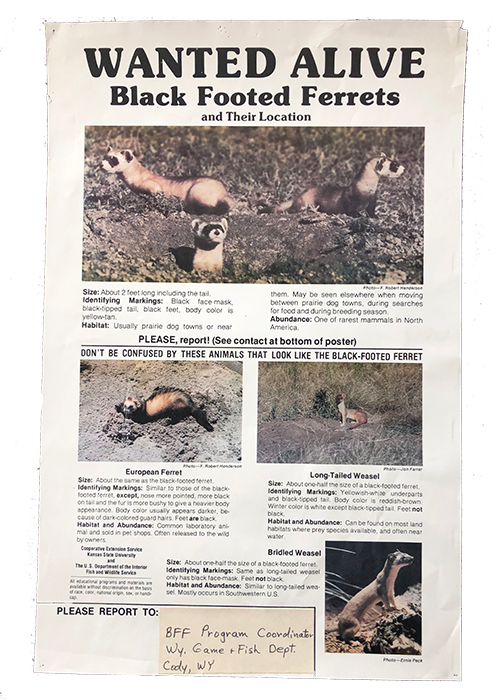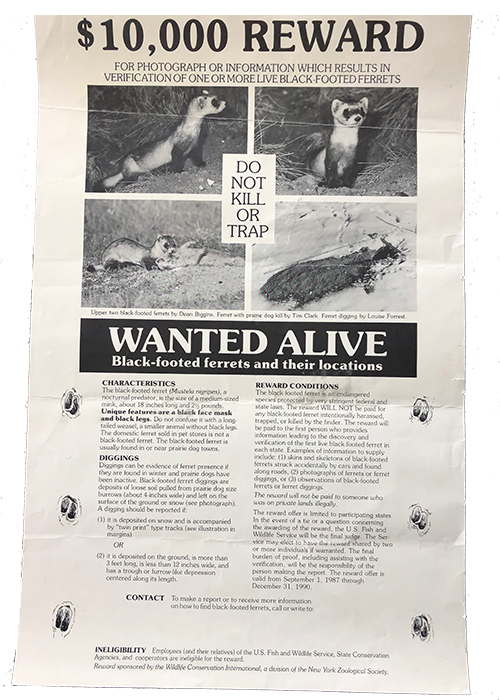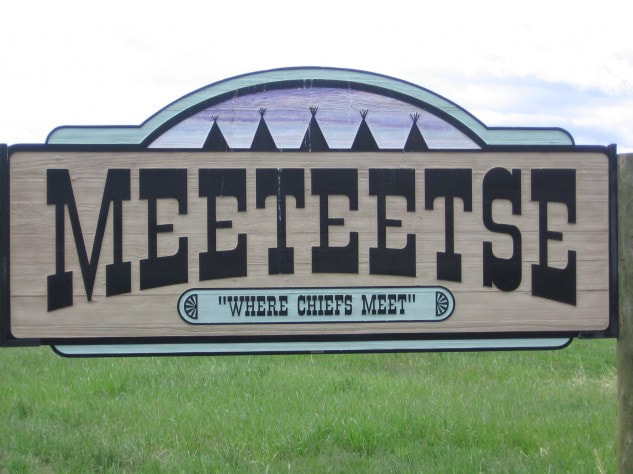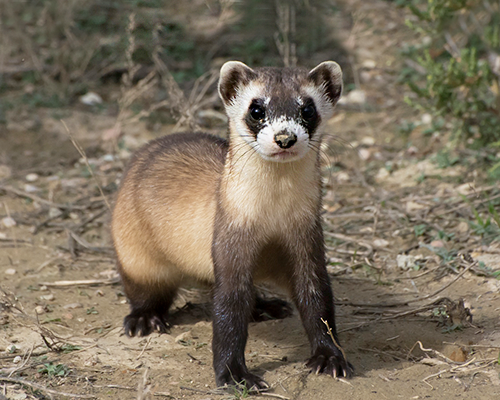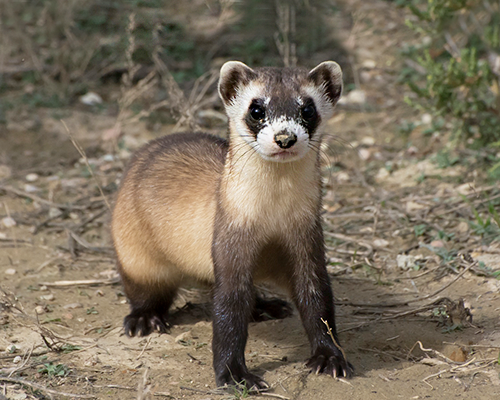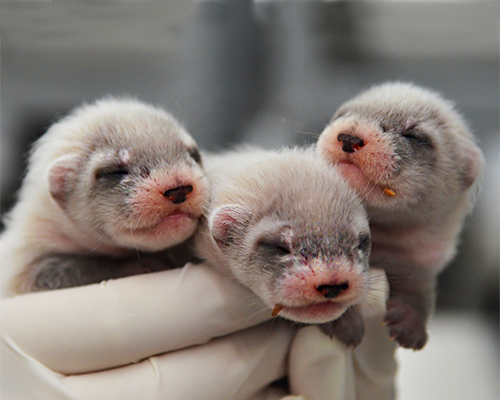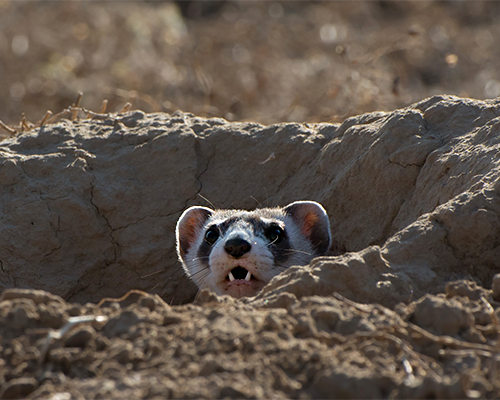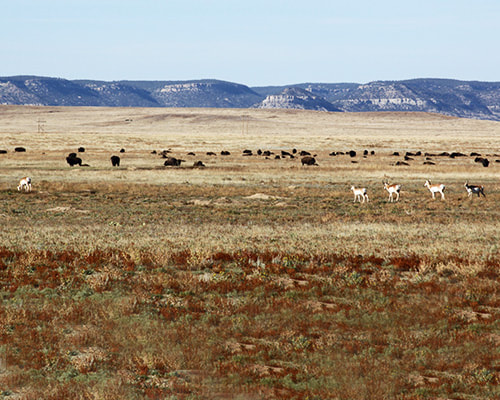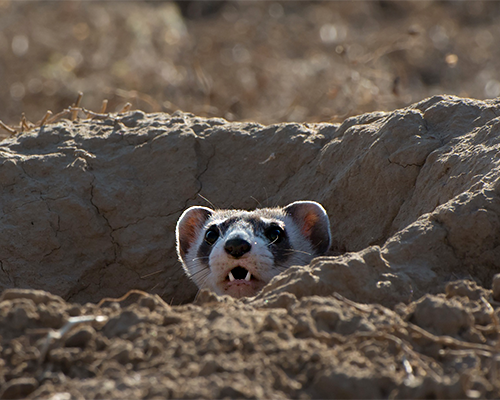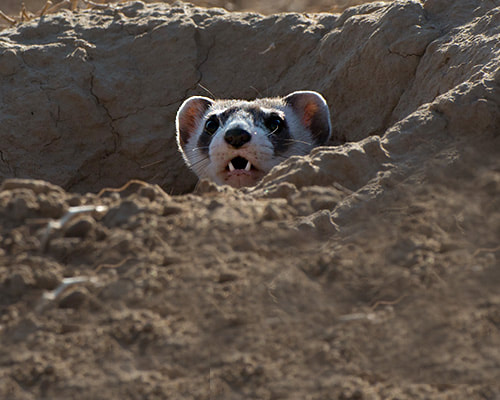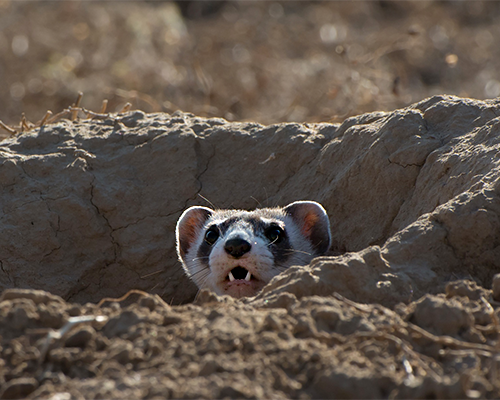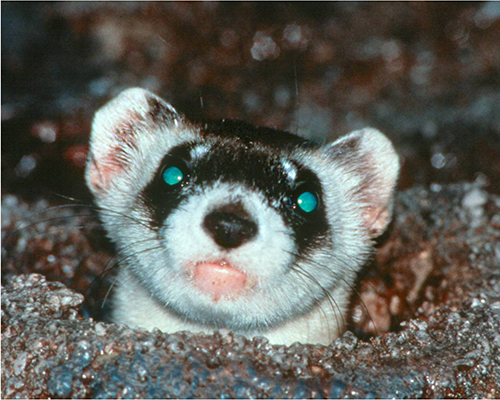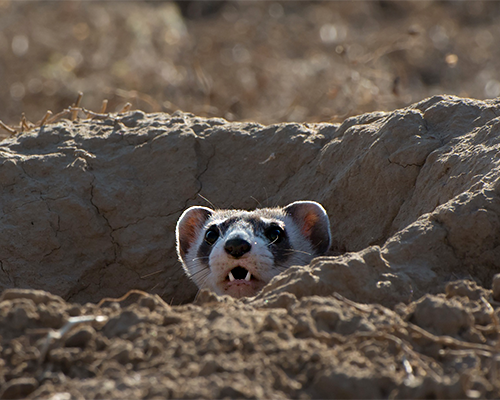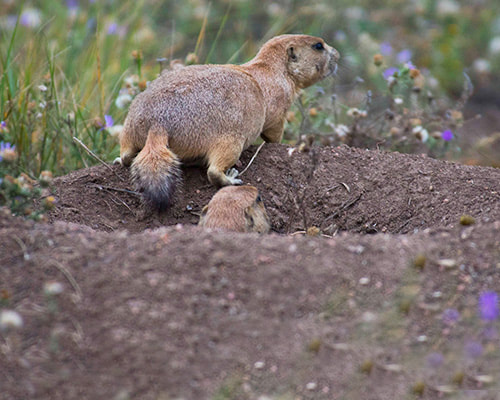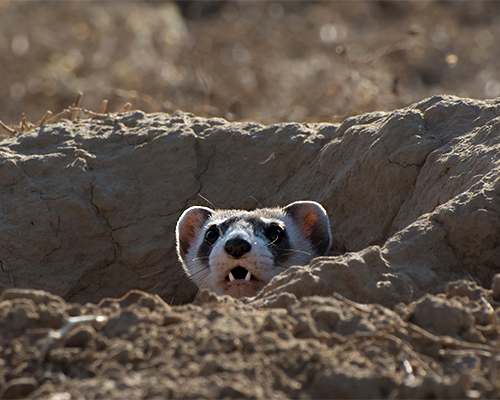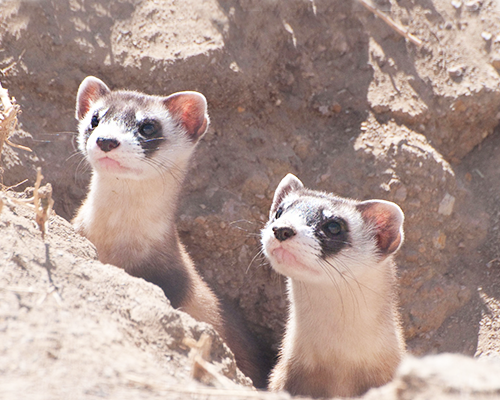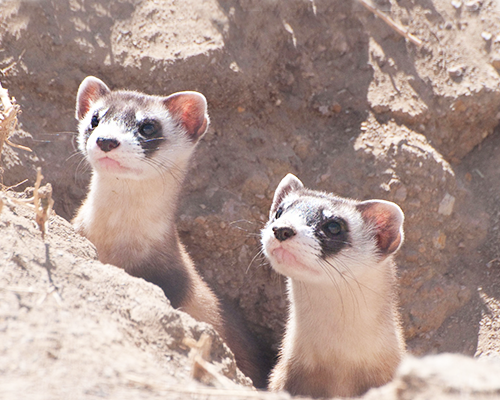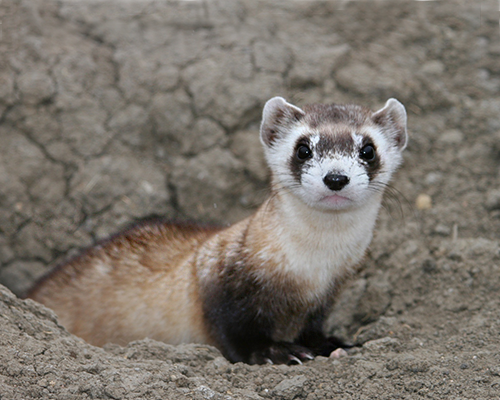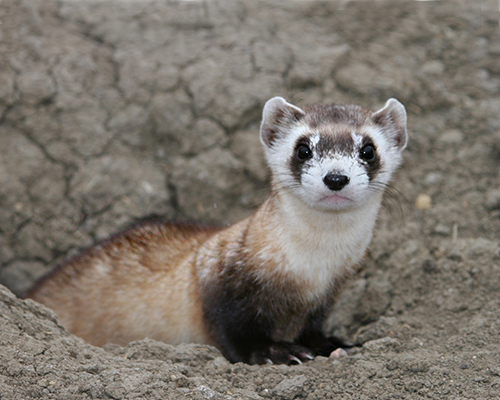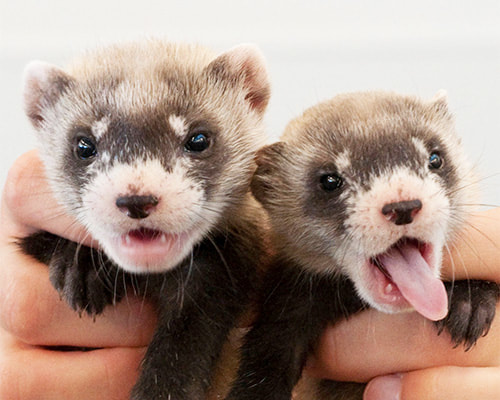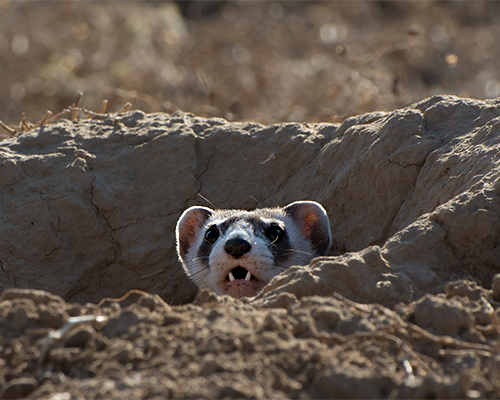CONSERVATION HISTORY
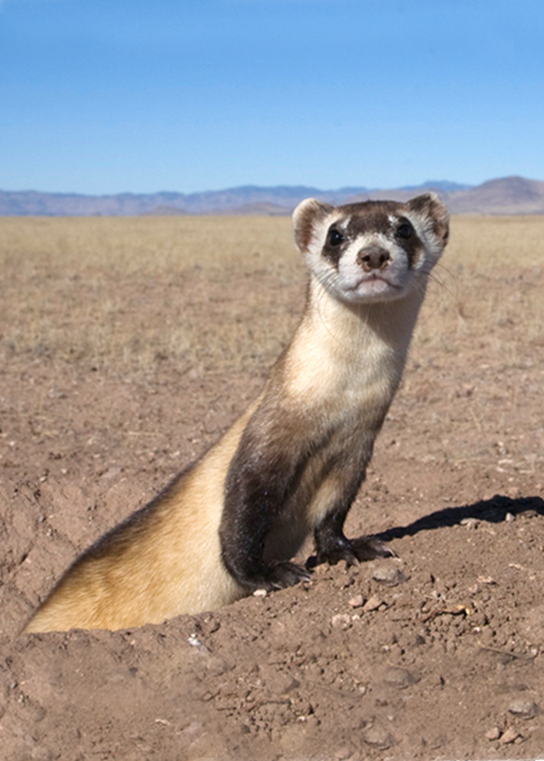
History of the Black-footed Ferret
Native Americans were the first humans to know about the existence of black-footed ferrets. Skeletons of ferrets and prairie dogs have been found in camps occupied by prehistoric Indians. Many different tribes including the Sioux, Navajo, Cheyenne, Blackfeet and Crow used black-footed ferret body parts, skins and furs for medicinal purposes and ceremonial adornments. Many tribes considered the ferret to be sacred.
Throughout their history, black-footed ferrets have been elusive. They were occasionally listed in fur company records in the early to mid-1800s. John James Audubon and the Reverend John Bachmann were the first to officially describe black-footed ferrets in 1851 from a single specimen found near the Platte River. They were so elusive to humans that shortly after Audubon’s description, controversy brewed over their true existence.
European settlement across the North American prairie dramatically altered the landscape through plowing and prairie dog eradication efforts. As their habitat and primary food source diminished, so did the black-footed ferret. By the late 1950’s, black-footed ferrets were thought by many to be extinct.
Native Americans were the first humans to know about the existence of black-footed ferrets. Skeletons of ferrets and prairie dogs have been found in camps occupied by prehistoric Indians. Many different tribes including the Sioux, Navajo, Cheyenne, Blackfeet and Crow used black-footed ferret body parts, skins and furs for medicinal purposes and ceremonial adornments. Many tribes considered the ferret to be sacred.
Throughout their history, black-footed ferrets have been elusive. They were occasionally listed in fur company records in the early to mid-1800s. John James Audubon and the Reverend John Bachmann were the first to officially describe black-footed ferrets in 1851 from a single specimen found near the Platte River. They were so elusive to humans that shortly after Audubon’s description, controversy brewed over their true existence.
European settlement across the North American prairie dramatically altered the landscape through plowing and prairie dog eradication efforts. As their habitat and primary food source diminished, so did the black-footed ferret. By the late 1950’s, black-footed ferrets were thought by many to be extinct.
Second Chance Lost
In 1964, a remarkable discovery was made when a small population of black-footed ferrets was found in Mellette County, South Dakota. Biologists studied these ferrets, and after a few years noticed the population was starting to decline. They captured nine ferrets and brought them into captivity in the hopes of starting a captive breeding program. The wild population died out in 1974. Unfortunately, captive breeding efforts were unsuccessful in producing surviving kits and the last ferret died in captivity in 1979. The black-footed ferret was considered extinct for a second time.
In 1964, a remarkable discovery was made when a small population of black-footed ferrets was found in Mellette County, South Dakota. Biologists studied these ferrets, and after a few years noticed the population was starting to decline. They captured nine ferrets and brought them into captivity in the hopes of starting a captive breeding program. The wild population died out in 1974. Unfortunately, captive breeding efforts were unsuccessful in producing surviving kits and the last ferret died in captivity in 1979. The black-footed ferret was considered extinct for a second time.
